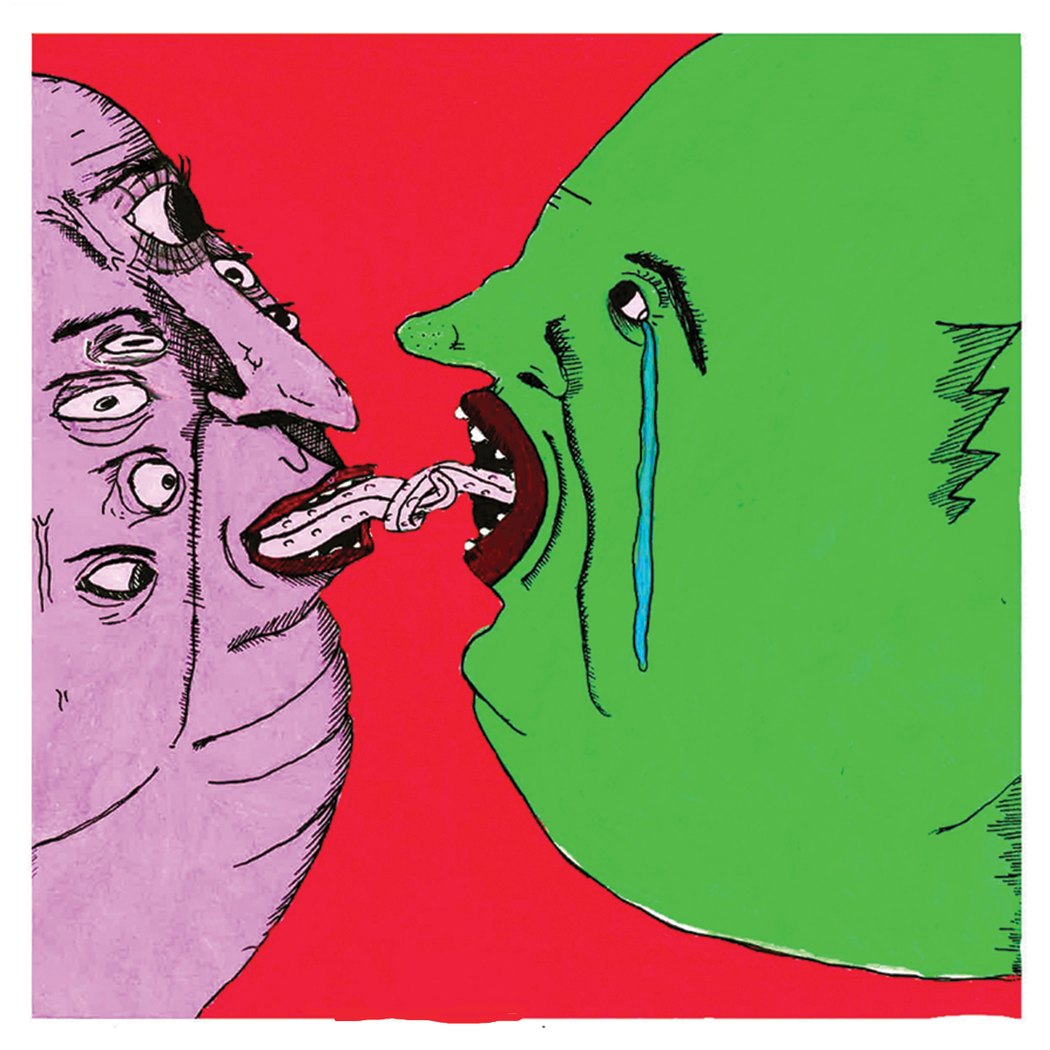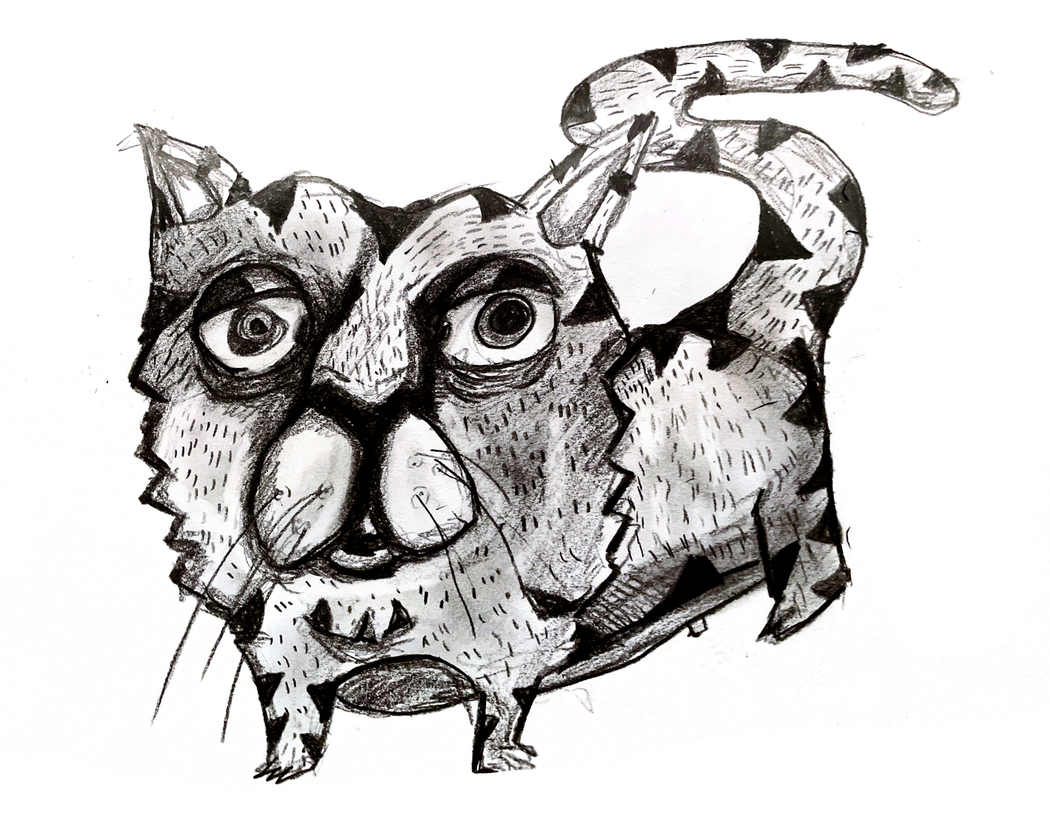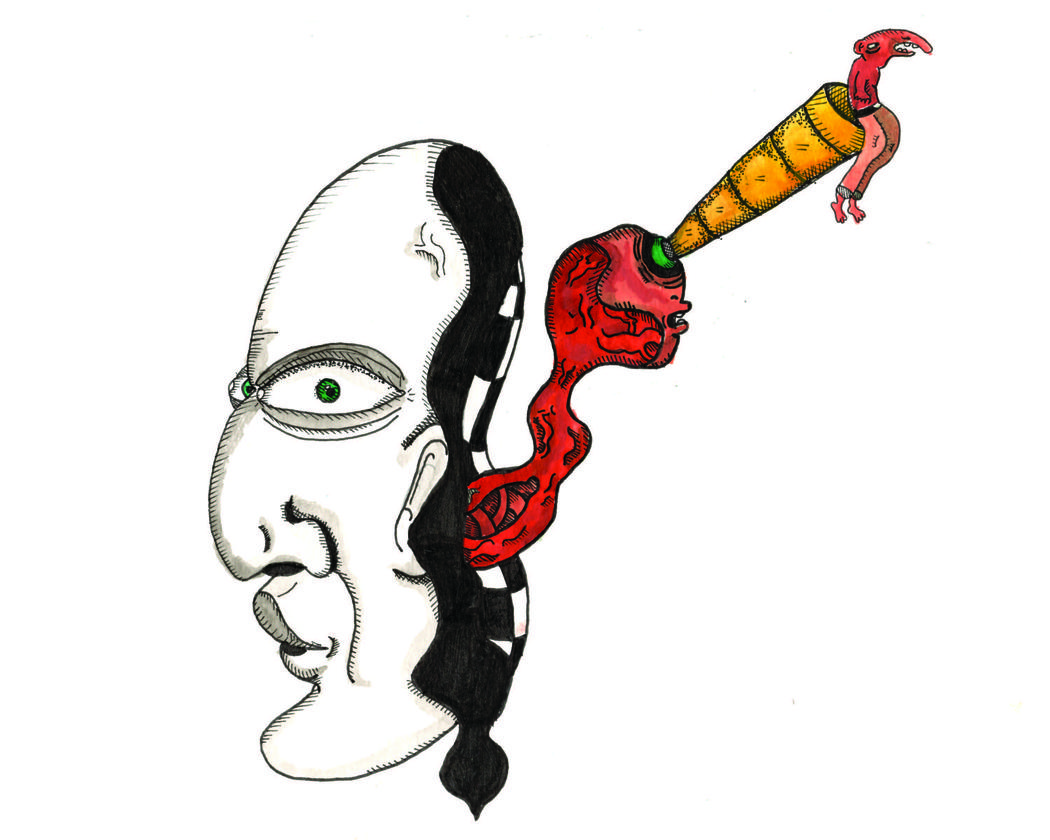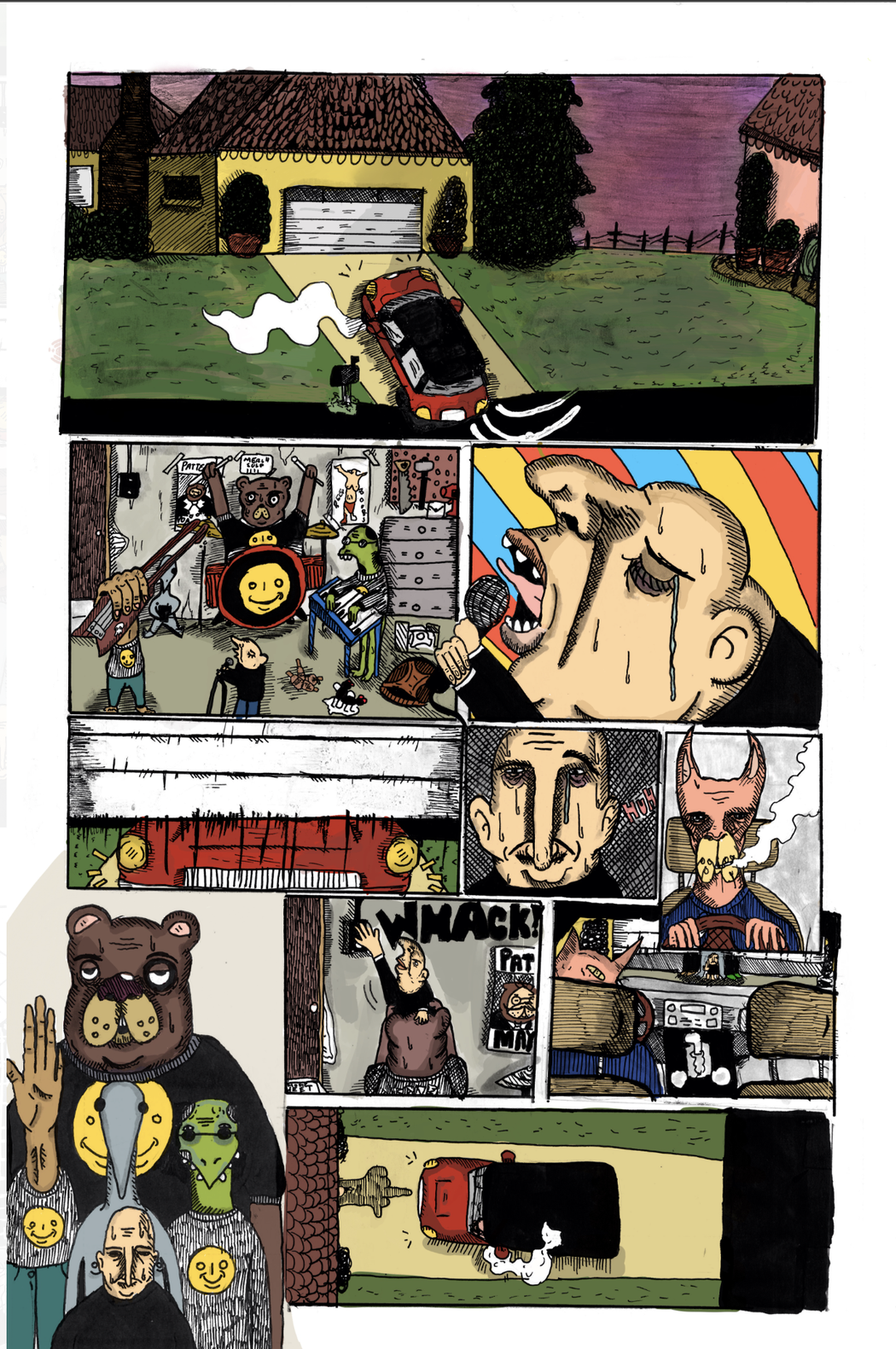Nick DiLollo
Where do you live: I currently live in Chicago, IL, USA. However, I consistently travel to various art opportunities across the United States!
Your education: I am currently working on finishing my BFA in Illustration and Animation
Describe your art in three words: Grotesque · Humorous · Reflective
Your discipline: Illustration · Animation · Sculpture
Website | Instagram
 Nick DiLollo | Wow I hate painting but love you | 2024
Nick DiLollo | Wow I hate painting but love you | 2024
Your work often shifts everyday experiences into unfamiliar perspectives. How do you choose the ordinary moments to exaggerate or transform in your artwork?
It just happens. The world often inspires my work, and the fact that, as humans, we assign meaning to most things even if there’s no reason to. I like to meditate on those moments, strip them down to their most basic concepts, and then build my story. For example, I created an illustration of two popsicles touching their tongues, causing them to melt into each other. The idea was to be a humorous reflection on self-preservation, drawing on the basics of human behavior and how relationships can be. I often find myself choosing moments as a reflection of the mundane happenings in my everyday life and those around me. The moments or experiences usually present themselves to me, allowing me to use my artwork as a tool to zoom out and embrace the humor surrounding those universally human experiences.
What is your process for capturing the absurdities of life while still maintaining some semblance of the mundane?
I often take a moment to reflect on what I am trying to achieve in my work, and hone in on the message that I want to convey. From there, I break a moment down into its simplest forms and begin my work. For example, in my piece “Saturn Devouring His Son, But Bread,” I took the concept of celiac disease and turned it on its head. Celiac, in its most basic description, is gluten triggering someone’s intestines to essentially eat itself. So I made a giant bread monster out of clay, eating a human intestine. Essentially, I take a simple idea and push the concept as far as possible.
 Nick DiLollo | Poofie | 2025
Nick DiLollo | Poofie | 2025
How do you balance humor with discomfort in your pieces? Do you feel the viewer’s discomfort is a necessary element of your art?
The balance tends to occur on its own. I start by looking for the part of the subject that lends itself to exaggeration, latching onto it as my point of interest in my storytelling. Due to the extreme levels of exaggeration, the viewer’s discomfort and active participation are vital. However, I find an interesting connection in asking someone to engage with something new and offbeat, often inviting discomfort as a result.
As someone who also works in animation, do you see any overlap between your work as a cartoonist and your animated pieces? How do the two mediums influence each other?
Definitely! I find that storytelling is at the root of all my work the discomfort and humor infused into my work is often amplified by motion. Animation and illustration overlap, especially when inviting people into absurd situations and worlds. Illustration captures a moment in time and tells a story that the viewer is actively participating in. Animation works off of those moments adding context to those events. This actively pulls you into the world at large, making you an active participant in the story itself. Animation can create a connection with the viewer that static artwork cannot always capture.
 Nick DiLollo | Planet crimson | 2024
Nick DiLollo | Planet crimson | 2024
Your work seems to focus on the feeling of familiarity but also strives to strip it away. What do you hope your audience takes away from this sense of disorientation?
At the very least, I hope that my art invites participation. I hope that my work invites the viewer to embrace that sense of disorientation and apply it to their own lives, taking an occasional step back to take the world with a grain of salt. I intend that through amplifying these moments, it becomes easier to find the absurdities in what we would deem normal. In a time where things are constantly changing, it’s important to remind ourselves to let loose and laugh. I encourage the viewer to be vulnerable, ask questions, and sit with what makes them uncomfortable. Disorientation can be a tool to learn and apply the same sense of humor and questioning to their world at large.
In your opinion, what is the role of absurdism in art today? Do you think it’s a way to cope with the absurdity in our everyday lives?
I believe that absurdism plays a large role in art. We live in an unprecedented time and we are experiencing a lot of changes globally. I know it can be very easy to get wrapped up in the shock and awe of the world, preventing us from taking a step back, look at everything going on, and just chuckle. That’s where absurdism comes in. Absurdism is a way to cope with the ridiculousness of everyday life and make topics that can be extremely hard to digest, and easier to understand. It holds up a gigantic magnifying glass to everything. Humor is one of the best tools to inform and find the wackiness that exists within our daily lives, leaving the viewer no choice but to confront the absurdity that exists in the mundane.
 Nick DiLollo | Nervendings | 2023
Nick DiLollo | Nervendings | 2023
How do you decide on the specific visual style for each project? Does the theme influence your artistic approach, or do you take a more spontaneous approach to each new work?
The theme influences the subject matter more so than my artistic approach. in my practice. I rely on spontaneity to guide the visual direction of each piece, allowing myself creative liberty. Being present in the moments that I am trying to depict allows for my process to shape itself in most cases. When I was working on my 2024 drawing collection of cats, I took the basic idea of cats, reflected on what I found interesting about them and just found as many possible ways I could accentuate those ideas through each piece in the collection, often just creating one piece after another with those basic touchpoints in mind.

Leave a Reply